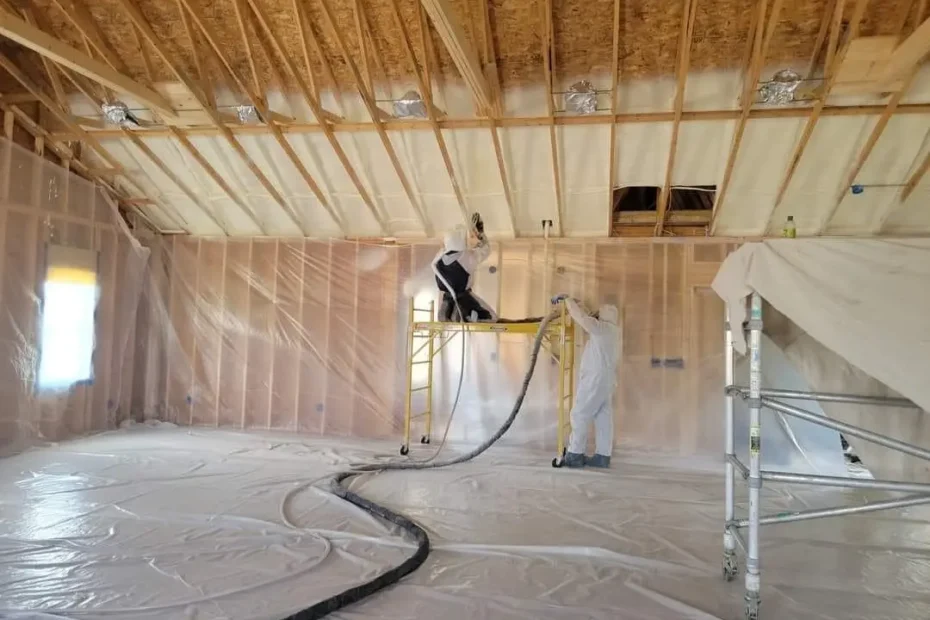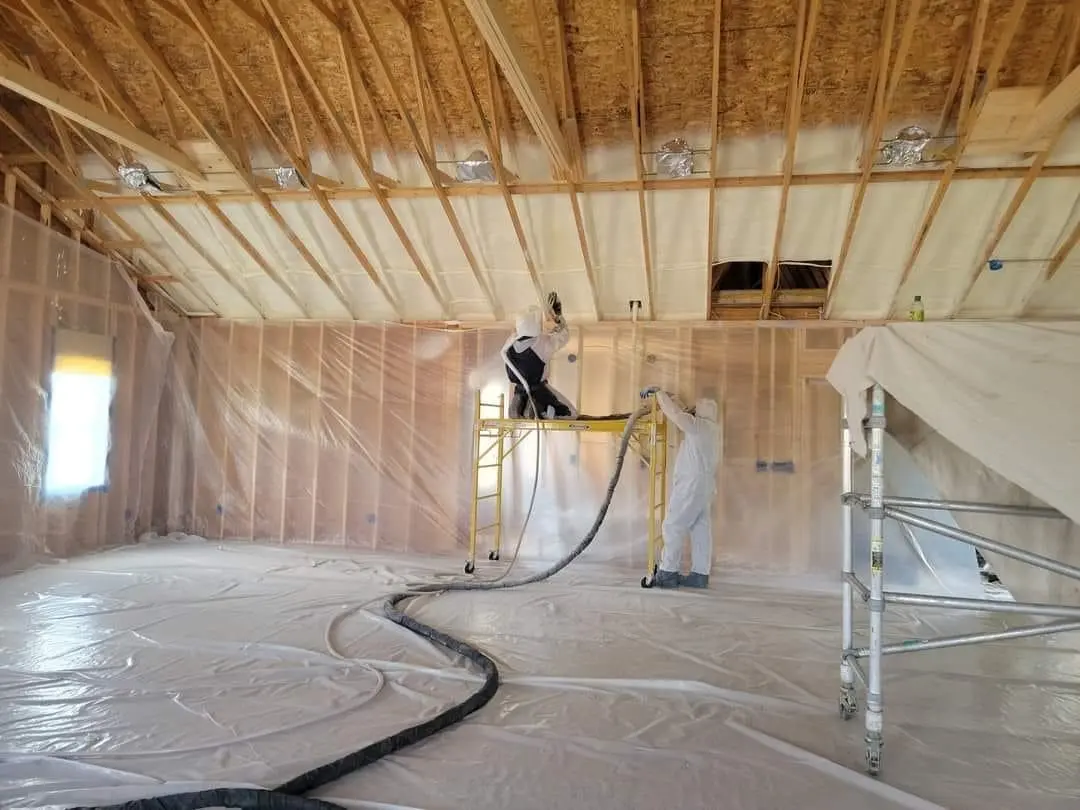Spray foam insulation is often touted for its energy efficiency and ability to create an airtight seal. But does it also play a role in preventing water damage? In this blog, we will explore how spray foam insulation works and its potential benefits in protecting your home from moisture issues.
Understanding Spray Foam Insulation
Spray foam insulation is a versatile product that expands on contact to fill gaps and create an airtight barrier. This product typically comes in two types: open-cell and closed-cell foam. Open-cell foam is lighter and more flexible, making it ideal for interior applications, while closed-cell foam is denser and offers higher insulation values. Both types play a crucial role in energy efficiency and moisture control.
The unique structure of spray foam insulation allows it to conform to the space it fills, effectively sealing off even the tiniest cracks and crevices. This means that air leaks, which can contribute to both heat loss and moisture problems, are significantly minimized. Understanding these characteristics helps homeowners make informed decisions about insulating their properties.
Moreover, the application method is crucial. Spray foam is applied as a liquid and then expands to fill the designated areas, creating a strong bond. This seamless application ensures there are no gaps left unfilled, enhancing the effectiveness of the insulation over traditional batts or rolls. By addressing these basics, we can appreciate what makes spray foam insulation a popular choice among builders and renovators.
How Spray Foam Insulation Helps with Air and Moisture Control
This insulation not only keeps air from escaping but also plays a role in managing moisture. It is essential for maintaining a comfortable indoor environment, especially in areas prone to humidity. When properly installed, spray foam can help lower humidity levels, thereby reducing the likelihood of mold growth.
One way spray foam combats moisture is through its ability to act as a vapor barrier. Closed-cell foam, for example, provides a higher resistance to moisture penetration, which means it’s particularly effective in damp areas such as basements. This feature allows homeowners to further shield their property against potential water damage.
In addition to acting as a barrier, spray foam insulation can enhance the overall durability of a structure. When moisture is effectively managed, the materials used in construction have a longer lifespan. Therefore, by integrating spray foam insulation, you’re not only investing in energy efficiency but also in the longevity of your home.
Furthermore, homeowners can benefit from lower energy bills when utilizing spray foam insulation effectively. This is primarily due to the reduction in heating and cooling demands. As your HVAC system works less to maintain the desired temperature, you’re simultaneously decreasing your home’s exposure to moisture-related problems.
Limitations of Spray Foam in Water Resistance
Despite its many benefits, spray foam insulation is not entirely waterproof. This section will highlight scenarios where it may not provide adequate protection. For instance, prolonged exposure to water can degrade spray foam over time, particularly if it is not properly sealed or if the applied thickness does not meet recommended standards.
Another limitation comes from its application. Spray foam insulation must be installed correctly to achieve the desired results. If there are voids or gaps during application, these areas become vulnerable to water infiltration. Furthermore, if the foam is not covered with appropriate materials, such as drywall or siding, it can deteriorate when exposed to the elements.
It’s also important to recognize that while spray foam can help control moisture, it is not a substitute for proper drainage systems and waterproof barriers. For optimal performance, spray foam should be used in conjunction with other moisture control methods. Understanding these limitations can help homeowners make better choices for their insulation strategies.
In certain situations, such as in flood-prone areas, additional protective measures will be necessary. Spray foam can slow down water infiltration but cannot prevent it completely. Thus, a comprehensive approach to protecting your home, including grading, drainage, and proper landscaping, is crucial.
Best Practices for Using Spray Foam to Prevent Water Damage
To maximize the benefits of spray foam insulation for water prevention, proper installation techniques and building practices must be followed. Here, we will outline key strategies. First and foremost, hiring a qualified professional is essential. Their expertise ensures that the foam is applied uniformly and in the correct thickness to enhance effectiveness.
Additionally, conducting a thorough assessment of your property before installation can identify potential moisture challenges. Areas prone to flooding or existing water issues may require a more tailored approach. Using spray foam in conjunction with drainage systems and waterproof barriers will provide an increased level of protection.
Another best practice is to ensure that the spray foam insulation is placed in critical areas such as attics, basements, and exterior walls. These zones are more susceptible to moisture infiltration and thus benefit greatly from the added protection. By focusing on these specific locations, you can significantly mitigate risks.
Regular maintenance is also key to sustaining the benefits of spray foam insulation. Inspecting foam for signs of wear, such as cracking or peeling, allows homeowners to address any issues promptly before they escalate. By staying proactive, you ensure that your home remains safe and protected from moisture.
In summary, combining proper application techniques with continual maintenance and existing moisture control measures sets the stage for success. By following these guidelines, homeowners can effectively leverage the advantages of spray foam insulation in preventing water damage.
Wrapping Up: The Role of Spray Foam Insulation in Water Prevention
In summary, while spray foam insulation is not a complete waterproofing solution, it can significantly reduce the risk of water damage when combined with proper building practices. Understanding how to use spray foam effectively will help keep your home safe from unwanted water infiltration.

